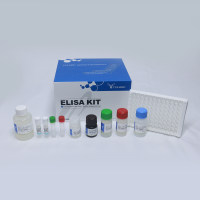Alterations in Oncogenes, Tumor Suppressor Genes, and Growth Factors Associated with Epithelial Ovarian Cancers
互联网
互联网
相关产品推荐

CDON抗体CDON兔多抗抗体Cell adhesion molecule-related/down-regulated by oncogenes antibody抗体CDON Antibody抗体
¥440

Zbp1/Zbp1蛋白Recombinant Mouse Z-DNA-binding protein 1 (Zbp1)重组蛋白DNA-dependent activator of IFN-regulatory factors;DAI;Tumor stroma and activated macrophage protein DLM-1蛋白
¥1836

促销中大鼠肿瘤坏死因子α(TNF-α)/Rat TNF-α/tumor necrosis factor (TNF superfamily,member 2)/Tnf;Tnfa;Tnfsf2;Tumor necrosis factor;Cachectin;TNF-alpha;Tumor necrosis factor ligand superfamily member 2;TNF-a) [Cleaved into: Tumor necrosis factor;membrane for/TNF/ELISA试剂盒
¥3420¥3800

EGF重组蛋白|Recombinant Mouse EGF / Epidermal Growth Factor Protein (Fc Tag)
¥580

Recombinant-Arabidopsis-thaliana-Protein-CPR-5CPR5Protein CPR-5 Alternative name(s): Protein constitutive expression of pathogenesis-related genes 5; Protein constitutive expression of PR genes 5 Protein hypersenescence-1
¥13790

